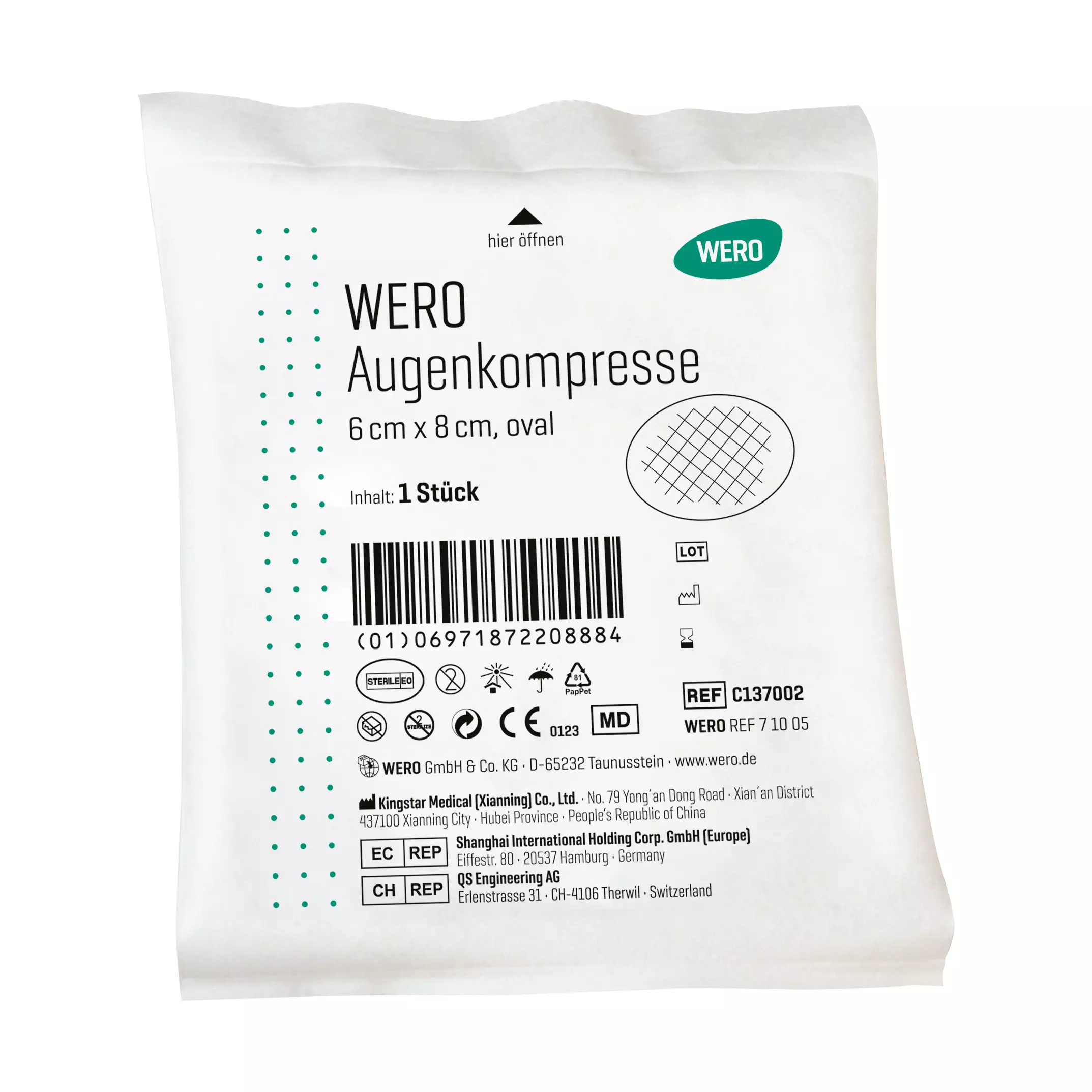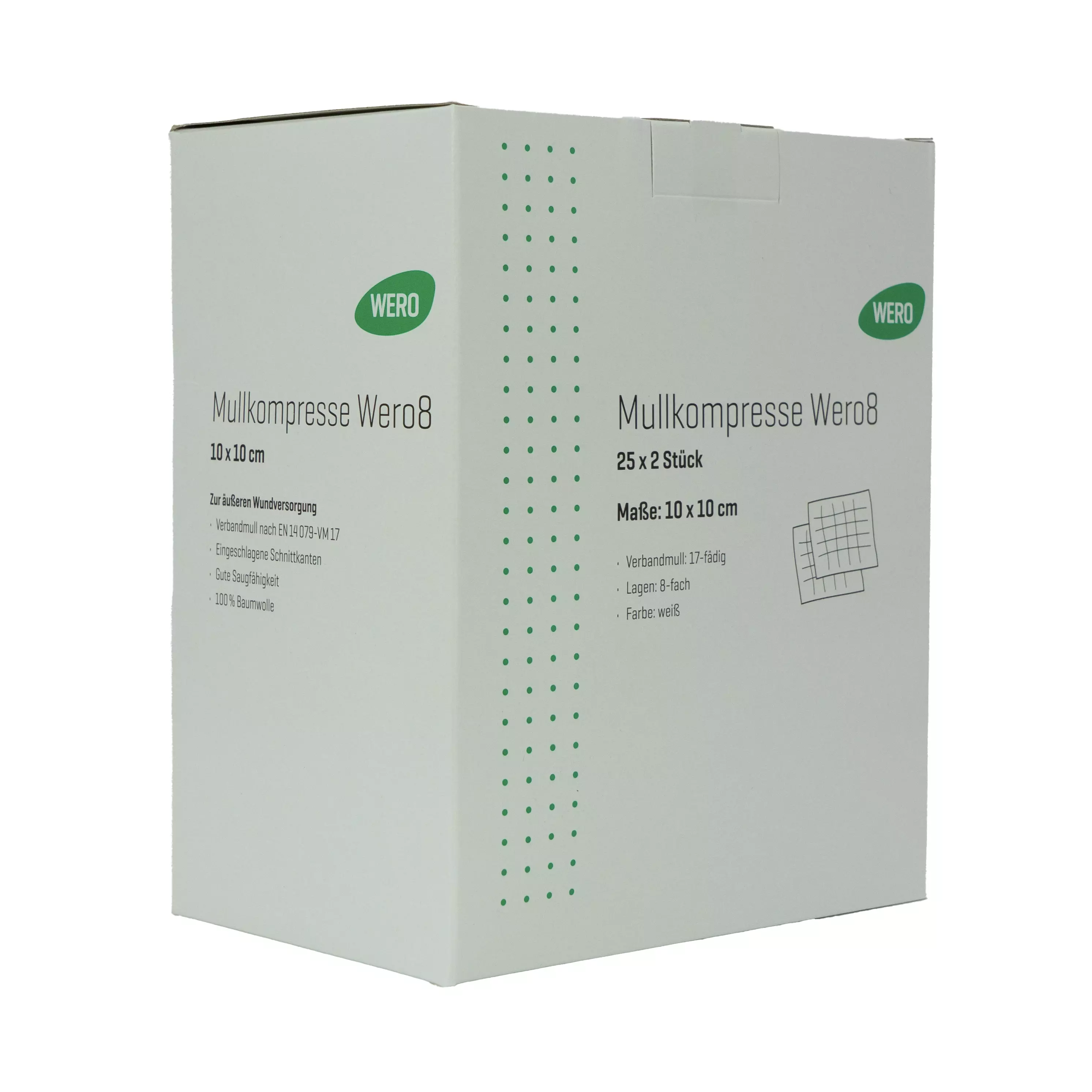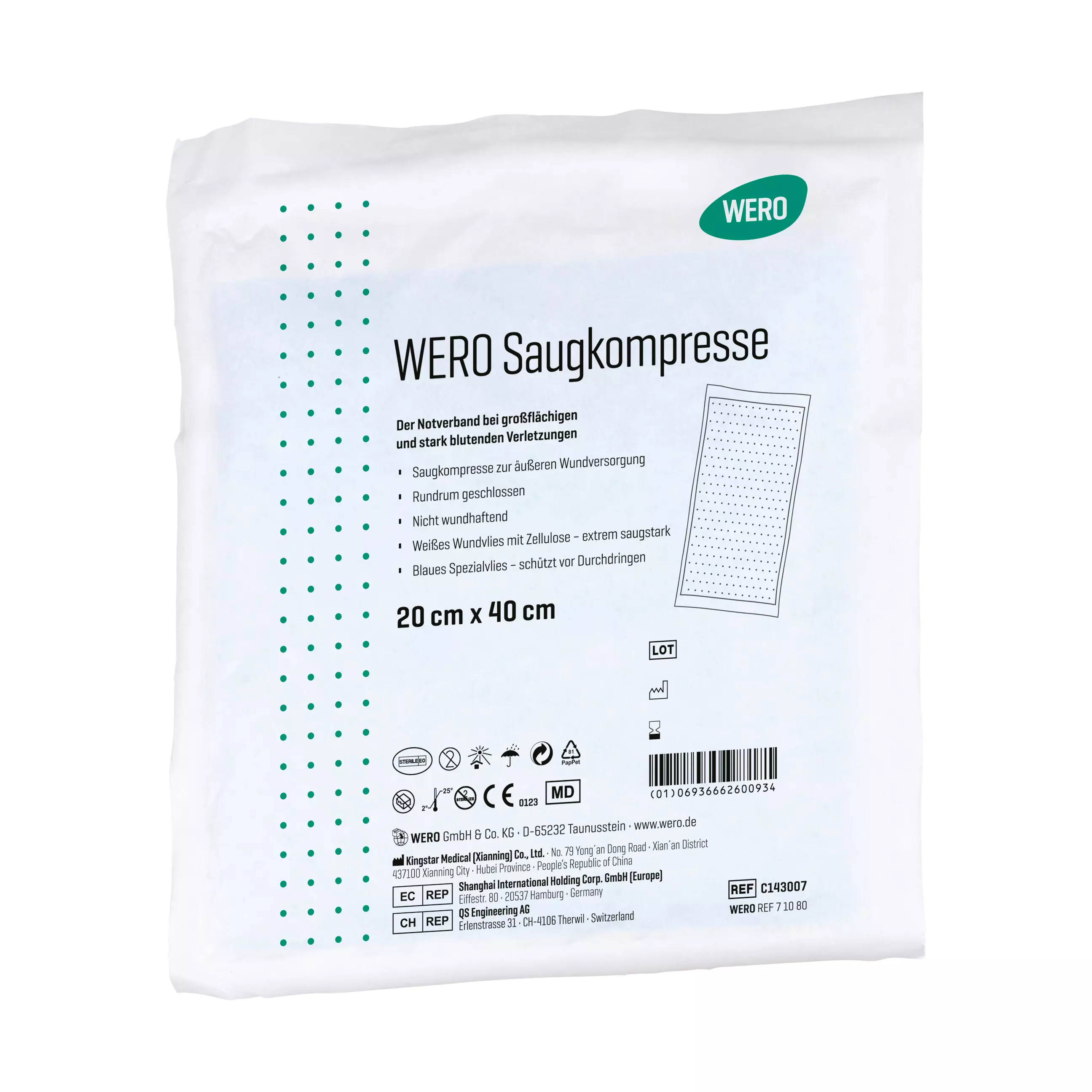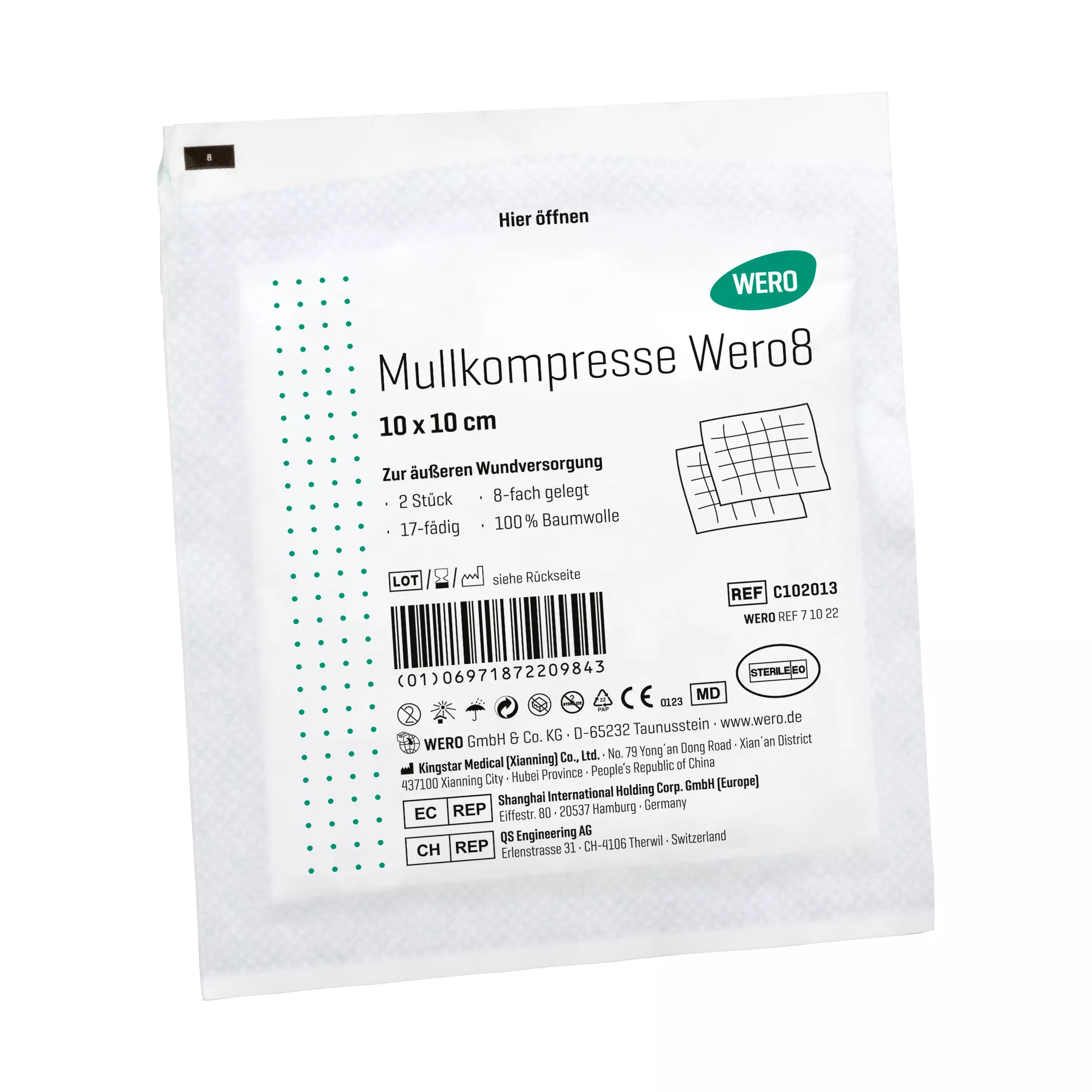Sterile and non-sterile compresses
Available, delivery time: 1-3 days
Available, delivery time: 1-3 days
Content: 25 piece (€0.89* / 1 piece)
Available in 2 days, delivery time 1-3 days
Content: 2 piece (€0.42* / 1 piece)
Available, delivery time: 1-3 days
Available, delivery time: 1-3 days
Content: 25 piece (€0.57* / 1 piece)
Available, delivery time: 1-3 days
Kompressen gehören in jede Erste-Hilfe-Ausstattung
Der Begriff leitet sich aus dem lateinischen Wort „comprimere“ ab, das „zusammendrücken“ bedeutet.
Bei Kompressen handelt es sich um Wundauflagen aus Verbandsmull (Gaze) oder einem anderen Material, das unter Druck auf die Wunde gelegt wird und der Erstversorgung sowie dem Schutz der Wunde dient. Der Stoff hält Keime von der Wunde fern und durch das Andrücken entsteht der Effekt der Blutstillung. Kompressen können auch in Kombination mit einer Salbe verwendet werden, um die Wundheilung zu beschleunigen.
Darüber hinaus stehen auch Wundkompressen zur Verfügung, deren Gazeschicht bereits anwendungsfertig mit Salbe beschichtet ist und als Salbenverband verwendet werden kann.
Wann kommen Kompressen zum Einsatz?
Wundkompressen aus Verbandmull werden unter anderem zur Blutstillung und zum Schutz einer Wundfläche eingesetzt.
Je nach Anwendungsfall können unterschiedliche Kompressen zum Einsatz kommen. Neben den „Standard-Kompressen“ gibt es zudem auch Spezial-Kompressen für diverse Körperstellen, wie z.B. das Auge.

Die richtige Anwendung einer Kompresse
Kompressen bieten zahlreiche Einsatzmöglichkeiten im Rahmen der Wundversorgung. Besonders bei offenen Wunden muss auf die fachgerechte Verwendung der Kompresse geachtet werden. Hierbei ist die oberste Priorität eine Entzündung oder Infektion der Wunde – z.B. durch Eindringen von Schmutzpartikeln – zu verhindern. Folgende Schritte sollten beachtet werden:
- Vor Anbringen der Kompresse sollte die Wunde gereinigt werden.
- Nach der Reinigung kann die Kompresse auf die Wunde gelegt und wahlweise mit Pflastern oder einem Verband fixiert werden.
- Abhängig davon, wie Pflegeintensiv die Wunde ist – sprich wie viel Wundsekret abgesondert wird und wie weit die Heilung fortgeschritten ist – sollte die Kompresse in regelmäßigen Abständen ausgetauscht werden, um eine optimale Wundheilung zu erreichen.
Aus welchen Materialien bestehen Wundkompressen?
Wundkompressen gibt es in zahlreichen Größen und Ausführungen. Sie sind meistens aus einem saugfähigen Material, das nicht fußelt. Dazu gehört Baumwollgaze oder anderes Baumwollgewebe, wie z.B. Vlies oder Zellulose. Durch die Saugfähigkeit und Beschaffenheit eignen sich Mullbinden für stark oder schwach nässende Wunden, um Wundränder geschmeidig zu halten und Brandwunden zu schützen.
Vlieskompressen sind besonders weich und eignen sich daher bei sehr schmerzempfindlichen Wunden, beispielsweise Schürfwunden. Sie bestehen aus Vliesstoff mit einer Spezialbeschichtung und sind sehr saugfähig, weswegen sie sich auch für stärker blutende Wunden eignen.
Welche Arten von Kompressen gibt es?
Kompressen sind bei der Wundversorgung und der Betrieblichen Erste Hilfe nicht mehr wegzudenken. Sie gehören zu den gängigsten Wundauflagen oder Tupfern zum Reinigen einer Wunde. Bei Wunden mit erhöhten Infektionsrisiko oder in sterilen Umgebungen greift man in der Regel auch zu sterilen Kompressen. Diese sind einzeln versiegelt und dadurch geschützt vor äußeren Einflüssen wie bspw. Keimen und Bakterien.
Es gibt unterschiedliche Arten von Kompressen. Zu den bekanntesten Gehören die Vlieskompressen, Mullkompressen, Saugkompressen und Salbenkompressen.
Vlieskompressen
Vlieskompressen kommen häufig bei Wunden zum Einsatz, die nur leicht sezernierenden sind. Also nur in geringen Mengen Sekrete (Flüssigkeiten) absondern. Sie bestehen aus Polyester, Viskose oder eine Mischung aus beiden Stoffen. Da der Vliesstoff mehrfach gefaltet ist, verklebt dieser nicht mit der Wunde. Sie sind sehr atmungsaktiv dabei jedoch auch sehr saugstark.
Augenkompressen
Augenkompressen kommen bei trockenen oder nässenden Wunden am äußeren Auge zum Einsatz. Die Augenkompressen zeichnen sich dadurch aus, dass sie besonders fusselarm und hautfreundlich sind. Die Kompresse schützt die Wunde am Auge vor äußeren Einflüssen, ohne dabei mit der Wunde zu verkleben. Die Form der Kompresse ist oval und somit schon an das Auge angepasst.
Mullkompressen
Mullkompressen gehören zur bekanntesten Form der Kompressen. Sie bestehen zu 100 % aus Baumwolle, sind mehrfach gefaltet uns dadurch besonders saugfähig. Mullkompressen eignen sich daher bei Wunden, die stark sezernierenden sind – also viel Flüssigkeiten abgeben.
Saugkompressen
Saugkompressen sind extrem saugstark und eignen sich deshalb hervorragend bei großflächigen und stark blutenden Wunden. Saugkompressen sind ebenfalls aus Vlies, besitzen jedoch noch eine zusätzliche Zellulose Schicht, wodurch sie sehr saugstark werden und ein Durchsickern und Blut und Wundflüssigkeiten verhindern.






